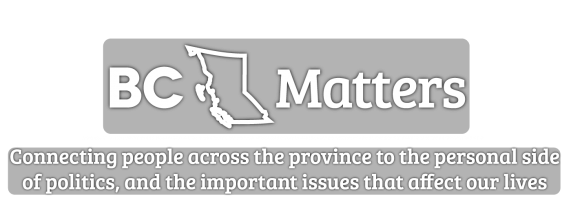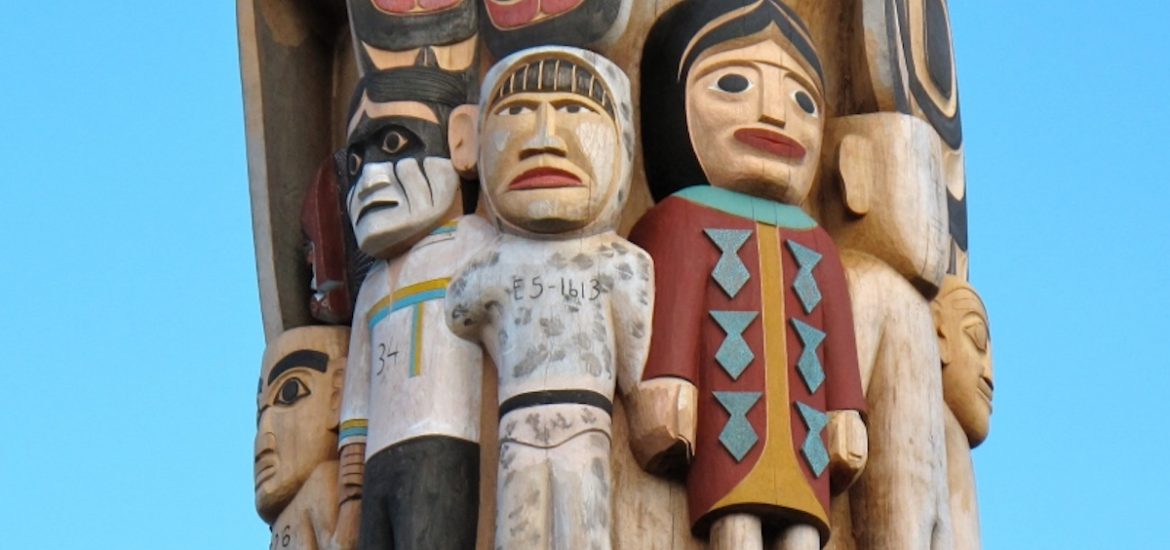
ÍY SC̸ÁĆEL. ÍY, C̸NES QENOṈE ṮÁ.
These were the words spoken in the Legislative Assembly by Lieutenant-Governor Janet Austin this past March. They mean, “Good day. It’s good to see you all,” in SENĆOŦEN – the language of the W̱SÁNEĆ peoples.
I find it inspiring that the LG is advancing reconciliation by learning one of the 34 Indigenous languages in British Columbia. To speak these words in the People’s House is a small but meaningful step to change course with respect to the way that Indigenous languages have historically been treated.
For decades, through a system of colonial oppression and government policies of assimilation, Indigenous languages were actively suppressed in residential schools. Children were punished for speaking their language, often severely. The residential school era was then followed by decades of Indigenous children being removed from their families and communities and put into the foster care system. Generations of Indigenous children and people have and continue to be impacted by this legacy.
For example, in BC today, only three per cent of Indigenous people can speak their ancestral language fluently. This represents a loss of 25% of fluent speakers since 2014. According to the First Peoples’ Cultural Council, all of BC’s Indigenous languages are severely endangered, and some languages have only a handful of fluent speakers left. Three Indigenous languages have no fluent speakers left at all. With over half of speakers over age 65, the passing of fluent speakers is a dire concern. Indigenous communities are in a fight against time.
Language equals voice – quite literally.
Grand Chief Edward John said recently: “Indigenous languages are the essence and fabric of Indigenous cultures and are fundamental to our survival, dignity and well-being as Indigenous peoples. Language is our inherent right and is central to our cultural and spiritual identities as First Nations.”
Our collective work of reconciliation must include strong support for Indigenous people to reclaim their voice by revitalizing their languages. There is no quick solution, but there is reason for hope, as support for Indigenous language revitalization grows across the country and the world.
The United Nations has designated 2019 as the International Year of Indigenous Languages. Later this month, the First Peoples’ Cultural Council and the First Peoples’ Cultural Foundation, in partnership with the Canadian Commission for UNESCO, will host Indigenous language speakers and experts for a major international conference on Indigenous language revitalization in Victoria.
Our government recently announced an unprecedented $50 million to support language revitalization in BC. This funding will go a long way to support the existing and growing movement by Indigenous people to renew and reclaim their cultures.
Across the province, there is an increase in the number of Indigenous people — especially young people — who are learning and speaking their languages. One young learner is Gisele Maria Martin of the Tla-o-qui-aht First Nation on West Vancouver Island. In interviews she has spoken about how learning her ancestral Nuučaanuł (Nuu-chah-nulth) language has helped her better understand her Nation’s worldview:
“If I think about it in our language, community includes all the life forms that we are interconnected with: all the plants, the animals, and the spirits of the places. As I’ve been brought up in English and in French, I’ve been interested in a lot of things regarding our culture. But there have been a lot of times where I didn’t understand what I was trying to understand, like I’m looking at the world in black and white. As I’ve been learning our language, it’s like learning to see things in full colour for the first time.”
In my own community of Maple Ridge-Pitt Meadows, Leah Meunier of the Katzie First Nation has been working to protect her Nation’s language, Hənqəmínəm̓ (Downriver Halkomelem), as there are no fluent speakers left in any of the three Katzie communities. She recently earned her master’s degree in First Nations languages at SFU, and has been working with the University and other Katzie members to develop a Halkomelem teaching curriculum. It’s inspiring to think that Katzie children will be able to learn their ancestral language in school, and that one day their language might once again be spoken regularly in their communities.
Young language learners have also become inspired to reclaim Indigenous place names. Students from ȽÁU,WELṈEW̱ Tribal School on the Saanich Peninsula — which offers SENĆOŦEN instruction — advocated for our government to rename John Dean Provincial Park “ȽÁU,WELṈEW̱/John Dean Park” (pronounced Tlay-will-nook), which translates to “place of refuge.” The park has historic and cultural significance for the W̱SÁNEĆ peoples, and restoring its traditional Indigenous place name respects and preserves the connection between land, language, and culture.
ȽÁU,WELṈEW̱ Tribal School offers one of four Indigenous immersion programs in BC. Seventeen Indigenous languages have been approved to be taught in BC schools, and more — like Halkomelem, in my community — are in development.
Names matter. Language matters. Kukpi7 Judy Wilson, Secretary-Treasurer of the UBCIC recently said: “Our languages hold the keys to the rebuilding of our Indigenous Nations, to healing the damages of colonialism, and to re-establishing our Indigenous legal orders and jurisdiction to our lands, territories and resources.”
There is still much to be done before Indigenous languages are once again thriving in our province; however, in partnership with Indigenous Peoples, we are on an inspiring path of hope and progress.
It’s been an incredible day at #FNLG2018. I had the opportunity to meet with Indigenous leaders from across British Columbia. We discussed language revitalization, Indigenous #Tourism, and how we can promote and support Indigenous art and culture. #Reconciliation @BCAFN pic.twitter.com/pBxU5f0CB2
— Lisa Beare (@lisabeare) December 1, 2018
And if you haven’t had a chance to visit the Royal BC Museum’s Our Living Languages: First People’s Voices in BC exhibit, I encourage you to come see it.
The interactive exhibition is in partnership with the First People’s Cultural Council and provides visitors with the opportunity to learn more about the history of disrupted languages in BC, the complexity of these languages, and the people and communities that are working to revitalize them.
You can walk through the “language forest” and listen to greetings, stories, and lullabies in the 34 Indigenous languages in BC. It’s an award-winning exhibition and a truly enlightening experience.
Photo credit: Close up of the Reconciliation Pole at UBC. Photo credit: Jeremy Board “Reconciliation pole-49” link

